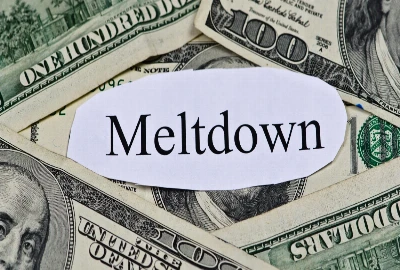Platform Penance: Apology Videos and the Rituals of Digital Redemption

From Public Scandal to Performance Art
In the modern landscape of online fame, apology videos have evolved from spontaneous reactions to a structured content genre. When influencers face backlash — for offensive comments, brand controversies, or personal misconduct — the expected response is immediate: a video apology. These videos often feature familiar tropes — tearful expressions, muted tones, sincere backgrounds, and phrases like “I take full responsibility.” Over time, these apologies have transcended mere accountability; they’ve become performances of remorse, shaped by audience expectations and platform aesthetics.
The Anatomy of an Apology Video
An apology video typically follows a recognizable emotional arc. The influencer begins with acknowledgment (“I know I let you down”), transitions into reflection (“I’ve had time to think about my actions”), and ends with a redemption narrative (“I want to grow from this”). These videos aren’t just about saying sorry — they are designed to control the narrative, reduce backlash, and rebuild trust. The sincerity is often measured not by words but by how the apology is performed — facial expressions, lighting, camera angles, and tone all play a role.
The Algorithm of Accountability
Interestingly, the algorithm rewards these confessional moments. Emotional content drives engagement, and apology videos generate massive views, shares, and commentary. Even negative engagement — dislikes, critique videos, or reaction content — fuels visibility. The result is an ecosystem where scandal and remorse coexist symbiotically. An influencer’s “mistake” becomes a marketing moment, and redemption becomes a strategy for retention.
The Aesthetics of Sincerity: How Apologies Are Staged for Believability

The Visual Language of Regret
Influencers understand that presentation equals perception. Many choose to film apology videos in simple settings — neutral backgrounds, natural light, casual attire — to signal humility and authenticity. Makeup is often minimal, and camera angles are direct, creating intimacy with viewers. Every element is calculated to convey vulnerability, from the slight quiver in the voice to the pauses that signal emotional overwhelm. In the digital age, sincerity has a visual grammar, and those who master it can transform contrition into credibility.
Emotional Authenticity or Emotional Engineering?
However, the very polish of these videos raises questions: how authentic can emotion be when it’s edited, monetized, and optimized for engagement? Some creators script their apologies, rehearse their delivery, or time their uploads strategically to avoid peak backlash hours. This calculated sincerity creates a paradox — audiences demand genuine remorse, but the nature of social media encourages performative displays. The result is what scholars call “engineered empathy” — a commodified version of emotion that serves both repentance and rebranding.
Why the Audience Wants to Believe
Despite skepticism, audiences often forgive. Many followers develop parasocial relationships with influencers and interpret apologies as opportunities for emotional reconnection. Forgiveness isn’t just granted — it’s desired. Viewers want to believe in personal growth, transformation, and the myth of the “imperfect but redeemable creator.” This cyclical forgiveness sustains the influencer economy, allowing creators to fall, repent, and rise again, often stronger than before.
The Economics of Redemption: How Sorry Becomes a Business Strategy

Apology as Rebranding
A well-timed apology can serve as a strategic pivot. After controversy, creators often use their apology videos to reframe their public image — positioning themselves as more mature, self-aware, or socially conscious. The apology becomes a launchpad for “the new me” content arc. For example, influencers may follow their apology with charity work, collaborations with marginalized communities, or mental health advocacy. This narrative shift transforms scandal into opportunity.
The Monetization of Morality
Ironically, apology videos often lead to spikes in engagement — more views, subscribers, and monetization opportunities. Advertisers that might have hesitated before sometimes return once an influencer successfully rebrands themselves through remorse. Even “cancelled” creators often experience what’s called “the redemption bump” — a renewed interest in their content due to public curiosity. The internet’s short memory and the economy’s need for content ensure that no scandal is permanent, only repackaged.
Crisis Management as Content Creation
Behind many apology videos are entire PR teams advising on tone, language, and visual cues. What used to be a private act of atonement is now part of a calculated brand management strategy. Influencers aren’t just apologizing — they’re performing repentance as content. The success of this strategy depends not on moral growth but on metrics: how fast can engagement recover, and how long until the audience moves on?
The Ritual of Redemption: How Audiences Participate in Forgiveness

Digital Forgiveness as Collective Performance
Apology videos are not one-sided confessions — they are rituals that rely on audience participation. The influencer seeks forgiveness, and the followers decide whether to grant it. Comments sections become moral tribunals, with fans defending, critiquing, or analyzing every frame. The audience’s reactions shape the outcome, determining whether the apology is accepted or rejected. In this way, digital forgiveness becomes a communal act, reinforcing social norms and shared moral values within the online ecosystem.
Parasocial Empathy and Emotional Investment
Because followers often feel emotionally connected to influencers, they process apologies as personal moments. This parasocial empathy leads to passionate defenses like “Everyone makes mistakes” or “They’ve learned and grown.” These interactions aren’t just about morality; they’re about emotional maintenance. Fans want to preserve their sense of connection, so they justify and rationalize the influencer’s behavior. The apology video thus becomes a therapeutic exchange — both parties find emotional closure in the process.
The Politics of Who Gets Forgiven
Not all apologies are received equally. The success of an apology often depends on the influencer’s demographic identity, privilege, and cultural capital. Marginalized creators are held to stricter standards, while popular or charismatic influencers are more easily redeemed. This inconsistency reveals the biases embedded in online audiences and algorithms — who deserves redemption, and who remains permanently “cancelled,” often says more about societal double standards than individual behavior.
The Cycle of Scandal: Why Digital Redemption Never Ends

From Cancellation to Comeback
Online culture operates in cycles. A creator is cancelled, issues an apology, takes a hiatus, then returns with renewed success. This rhythm of downfall and redemption sustains both creators and platforms. Each scandal fuels endless reaction videos, commentary content, and discourse threads — all of which drive engagement. The irony is that cancellation, meant as punishment, often becomes publicity.
Forgiveness as a Business Model
Platforms like YouTube and TikTok thrive on narrative. Apologies and comebacks are chapters in ongoing influencer sagas. Viewers tune in not just for entertainment but for moral drama — to witness downfall and resurrection. In this economy, forgiveness isn’t an act of grace; it’s part of the content cycle. The influencer’s penance becomes their next viral moment, ensuring continued relevance in a market that rewards emotional visibility over ethical depth.
Emotional Exhaustion and the Death of Authenticity
However, as the cycle repeats, audiences grow desensitized. The repetition of similar apology tropes erodes sincerity. Viewers begin to see these acts of remorse as predictable performances rather than genuine reflection. This desensitization creates emotional fatigue, where audiences stop caring altogether. The result is a culture that thrives on spectacle but struggles with sincerity — where every “I’m sorry” feels scripted, and every act of redemption feels rehearsed.



